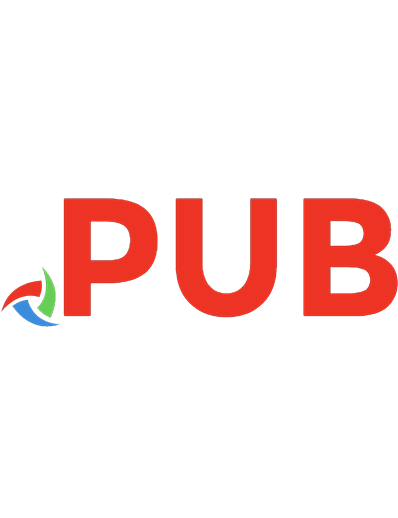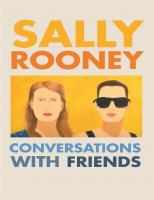Friends of Friends. Networks, Manipulators and Coalitions. [Mit Tab. U. Diagr.] (Repr.)
348 109 29MB
English Pages 285 [150] Year 1974
Polecaj historie
Citation preview
FRIENDS OF FRIENDS Networks, Manipulators and Coalitions
JEREMY BOISSEVAIN University of Amsterdam
ST. MARTIN'S PHESS NE\V YORK
© Basil Blackwell 1974 AJJ rights rcscn:cd. For information, write: St. \1artin's Press, Inc., 175 Fifth Avenue, Kew York, N.Y.10010 Printed in Great Britain Library of Congress Catalog Curd Number: 74-83521 First published in the United States of America in 1974
AFFILIATED PUBLISHERS: Macmillan Limited, London -also at Bomhav, Calcutta, Madras and Melbourne
To INGA, IEXEKE, LIETJE, MARIA and ANNA
Preface
This book is a personal document in man} senses; but no one works alone. I have tried to indicate all Lhe published sources of iclcas that have been important to me. The most important influences, however, have been from discussions with members of my personal network, and they arc many and diverse. Some agree with the ideas presented here, but many do not. The hook st.irted as a series of four lectures given at the Uni\'ersity of Sussex in 11areh 1968. These were expanded before clilfercnt groups at the University of Amsterdam Qi21 " ' N
Cl
.,
·;:U
t! QI >
cg 0
u~
.,c 0
.,c
:!;! QI
u:
·=iii
c:;g' Q> ii:
0 c(
"'
I-
~
I
00 Olt'I
........
!qr-: 'ltM I or-. .... 00
CX)(')'ltlt'l-.t , .... ~ oi N a> 0
r-.
oi LCi LCi f'i
"
0
CX) "
"'~ LCi ..t ,....
"'
:ulil: I
q,1'1 CX) M N
OON
"'~o;,...:
CX) Cl>
~o~
QI
";:;
:0
"' N.-'lt . . .
O>U
?: ·s;
it)
I
~
)(
w
"O
Ll1 f'
'ltN
:: l
.l:
"
~
Q.
OMOf' f'i~!Dci
'It
Ici co I ...:c0,.n...:...: r-:l
co
Cl>
a
.&:
NOlt'IN-
I
s. co
!!! >-
co
0
....
N
I
0
)(
"'oE
0
~·=
!!! >-
0
!!! >-
0
0
E
s.
N
....
co N
!!! >M
0
0
)(
E 0 E~E~E
E
NEME .... ~MENE~E .... E.-E.-E
.,
...>- .,>- .,>- .,>N,,M,,M,,N,, "' "' "' "'
~ >>ca~caco ...- ,, N >-N,,
M,,
I
c:: ·5?·.!.:3> ...., > ·-C
~"' I
)(
)(
u.,
'
E
,g
I
Cl)
al
0
•
c:
IQ
...,
!!! >-
0
c: -~ 0
-
~d>cOi ~- .... t
u
0
c:
0 .D
al
)(
0
~ 4>
·- "' c: _EE ~
~
I
- ,,·u; ~1£
,,c: ~
0
:c
)(
0
-
U·-
u-
o~
.
c: ouo (.) !! z
0
> ~
-Cl
0
0
0
>
>
~
~
> ~
.
'
Cl
2
Q
u.
::I
•~"'
~ u.
·c:
0 .0 G> ·c: ~ Cl - 1ii .!:!'Cl) g c:
"' ::io~ .. 11ii .. ~1ijCIQl~ 2 .~ (,) ..! £ .!l ~ c.> :3 u ~
e ~ CV ·c: :: ·c ·c a.. .!:!.a.. a.. .... a.. a.. Q)
....
N
M
..
-c:
al
2
::I 0 .0 0 ~ Cl Cl ...
u.
Z>
0
......
0
'E 0 u Q)
·c:
::I
~5oo~5:o
......
)(
Cl
c:
0 .0 CD '-' ~ Cl 0
Cl
)(
> ~
Cll
c:
::I
o~
::I 0
0
·c:
...
• c:
)(
)(
E~
Q)
: ·c: :v 0 ~ 1-a..u.a..1-
Cl
iQ
... Q)
~
u
...."' QI
"iii ;::
a:
fn 0
0
H
II
.;!zz
al Q) ::I
.,
"'u"' E "'u. QI QI c: u. .... ·-
.0
... Cl
- ~ t:
0
E >-
(/)
~
atrons. Those who dispense second order resources are brokers.2 A broker is thus a special type of
II
entrepreneur: one who controls second order resources and manipulates these for his own profit. Brokers are thus highly expert network specialists. \Ye may explore how brokers operate their roles by trying to answer four questions: What do brokers do? Who becomes a broker? How do brokers make a profit? and, How do brokers build a career?
1 JSFORMA· ..,__
WHAT DO DROKERS
I
I
I
nos
no?
The short answer to this question is that a social broker places people in touch with each other either directly or indirectly for profit. Ile bridges gaps in communication between persons, groups, structures and even cultures. Such persons range from 'connecting relatives' who direct the communication between kinsmen and whose profit motive is more latent than manifest, through political middle-men whose medium of exchange is services, information, and votes, to such specialists as marriage and real estate brokers whose relations approach the commercial as their tariff is largely paid in cash. The anthropological literature abounds with examples of brokers, for the manipulation ~f others is a fascinating subject.' Think also of the popularity of spy stories-a spymaster is an excellent example of a broker who carefully builds up a specialized information gathering network-and accounts of criminal brokers, such as Mario Puzo's recent bestselling novel about an American mafioso, The Godfather.• But perhaps the simplest example of a communication broker is the telegrapher who sends a message for a client. Many companies have waxed fat on man's need to communicate with man. And so have social brokers. A broker is a professional manipulator of people and information who brings about communication for profit. Ile thus occupies a strategic place in a network of social relations
SO\.:RCE
11
I'
II
11
2 TRASS· MITTER
f--
s
CHASSEL
H
.
RECEIHR
L-.1
s
.----] Ol:HISUIOS
The infonnation source selects the message lo be sent. The transmitter changes this into a signal that is sent via a communication channel to the receiver and thence delivered to destination. According to communication specialists, the important questions to ask about a communication system have to do with the amount of information, the capacity of the channel, the coding process used to change a message into a signal, and the effects of noise {interfcrcn










![Friends of Friends. Networks, Manipulators and Coalitions. [Mit Tab. U. Diagr.] (Repr.)](https://dokumen.pub/img/200x200/friends-of-friends-networks-manipulators-and-coalitions-mit-tab-u-diagr-repr.jpg)